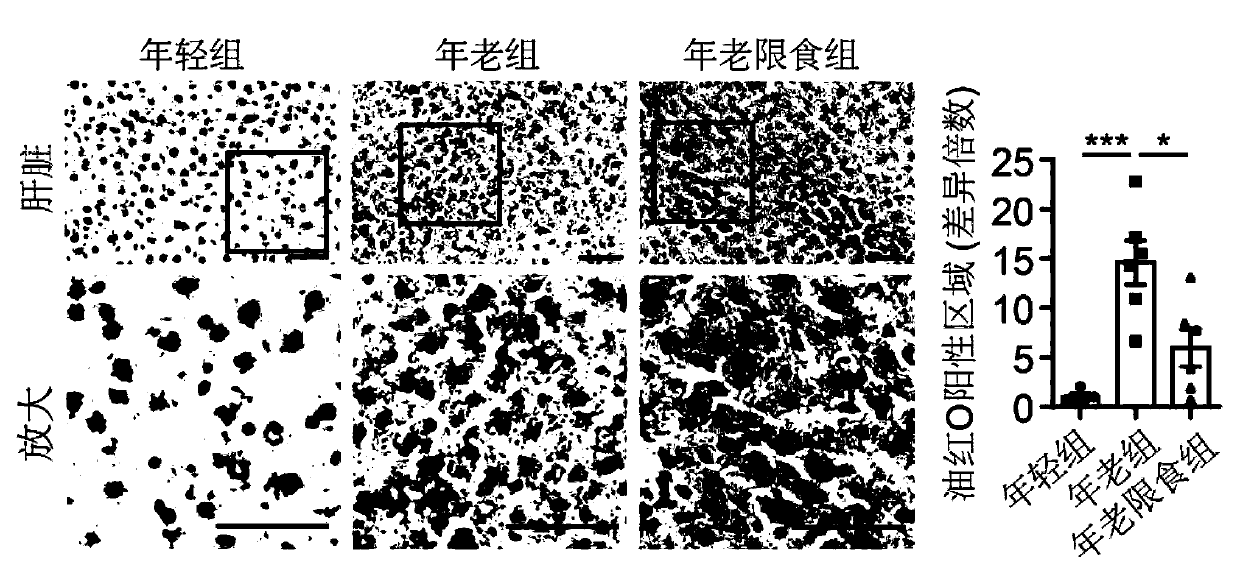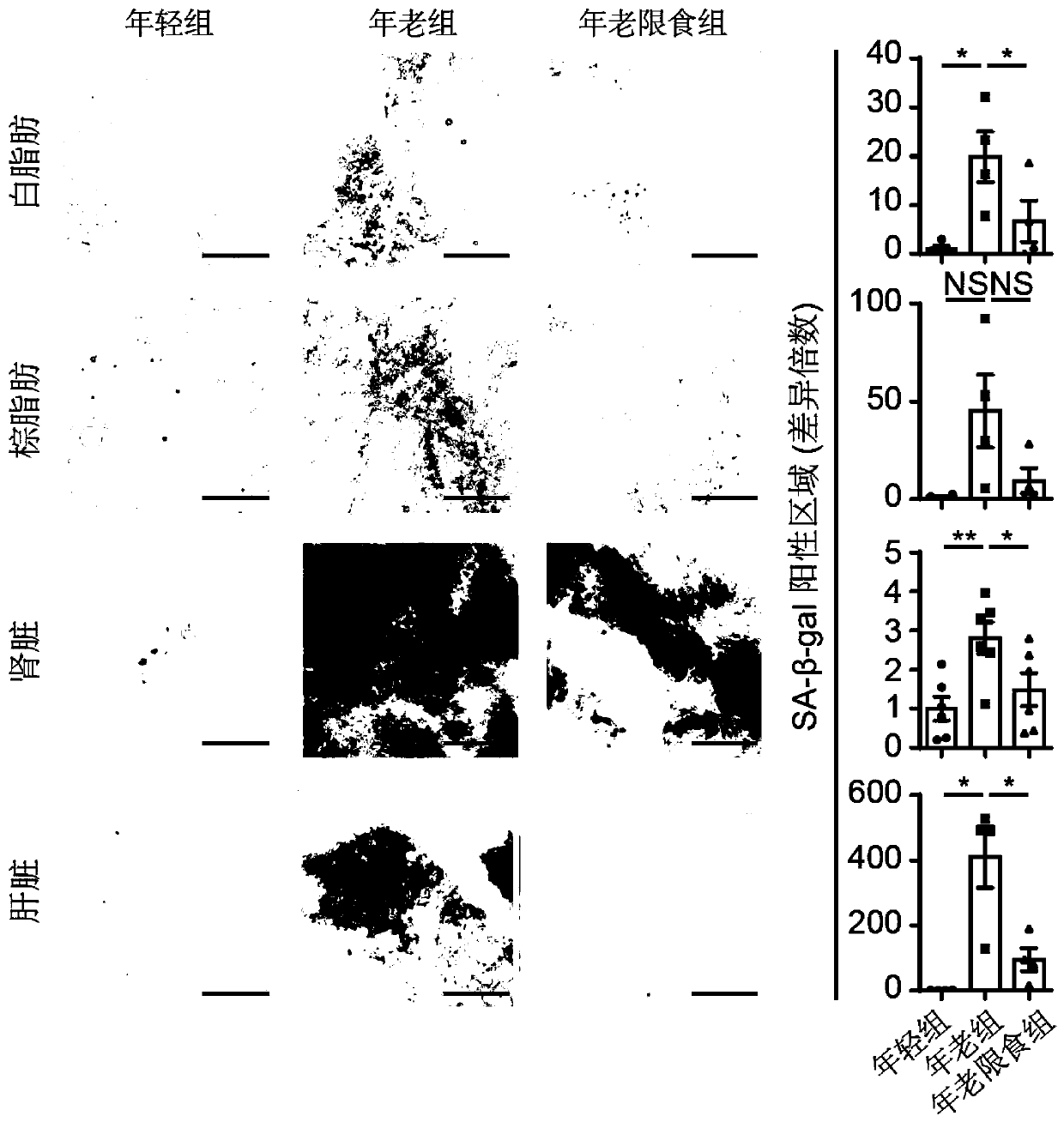Application of senescence markers and caloric restrictions of multiple tissue organs and cell types in delaying senescence of organism
An aging and body technology, applied in the direction of instruments, scientific instruments, recombinant DNA technology, etc., can solve the problem of lack of multi-organ senescent cell atlas
- Summary
- Abstract
- Description
- Claims
- Application Information
AI Technical Summary
Problems solved by technology
Method used
Image
Examples
Embodiment 1
[0096] Example 1. Effects of Aging and CR Diet on Lifespan and Phenotypic Traits
[0097] 1. Experimental groups and methods
[0098] 1. Experimental grouping
[0099] The experiment was divided into three groups, the young group (referred to as the young group, 30 rats, 15 males and 15 females), the old free diet group (abbreviated as the old group, 30 rats, 14 males and 16 females) and the old 70% calorie diet group. In the food-restricted group (referred to as the aged-restricted food group, 26 rats, 12 males and 14 females), each rat was reared in a single cage. The specific treatment methods for each group are as follows:
[0100] Young group: 2-month-old rats were fed with sufficient standardized rat feed every day (to ensure that the feed remained uninterrupted), and histological detection was performed after continuous feeding for 3 months.
[0101] Elderly group: 18-month-old rats were fed with sufficient standardized rat feed every day (to ensure that the feed rem...
Embodiment 2
[0154] Example 2. Effect and verification of aging and CR diet on cell ratio changes
[0155] 1. Experimental method
[0156] In order to describe the compositional changes of dynamic cell types during aging and CR, the following seven tissues were compared between the young group, the old group and the old food-restricted group: brown adipose tissue (BAT), white adipose tissue (WAT), The proportion of each cell type in liver tissue (Liver), kidney tissue (Kidney), aorta (Aorta), skin (Skin) and bone marrow (Bone marrow), and bioinformatics data through immunofluorescence experiments and flow cytometry experiments Prompt cells with changes for experimental verification. Specific steps are as follows:
[0157] 1. Tissue cell isolation and sequencing
[0158] 1) Isolation and sequencing of white fat, brown fat, kidney, skin, liver and vascular tissue cells
[0159] Each group of rats in Example 1 was anesthetized and perfused with physiological saline. After the same tissues...
Embodiment 3
[0184] Example 3. Analysis and verification of key differential genes between aging and CR diet
[0185] 1. Experimental method
[0186] 1. Gene differential expression analysis
[0187] 1) The Wilcoxon rank sum test in the "FindMarkers" function of the Seurat software package was used to perform differential expression analysis of each cell type between the different groups (old / young and old / old restricted food groups). Cell types (B cells in the aorta, CD8 + T cells and plasma cells; B cells, NK cells and neutrophils in the kidney; plasma cells in brown fat; NKT cells in the skin).
[0188] 2) Compare the differentially expressed genes (DEGs) between the aged group and the young group to establish an aging-related DEGs data set (aging DEGs) (|LogFC|>0.5, adjusted P-value0.5, adjustedP-value<0.05). Based on the above 2 datasets, "rescue DEGs", i.e. genes that were significantly upregulated or downregulated in agingDEGs and significantly downregulated or upregulated after ...
PUM
 Login to View More
Login to View More Abstract
Description
Claims
Application Information
 Login to View More
Login to View More - R&D
- Intellectual Property
- Life Sciences
- Materials
- Tech Scout
- Unparalleled Data Quality
- Higher Quality Content
- 60% Fewer Hallucinations
Browse by: Latest US Patents, China's latest patents, Technical Efficacy Thesaurus, Application Domain, Technology Topic, Popular Technical Reports.
© 2025 PatSnap. All rights reserved.Legal|Privacy policy|Modern Slavery Act Transparency Statement|Sitemap|About US| Contact US: help@patsnap.com



